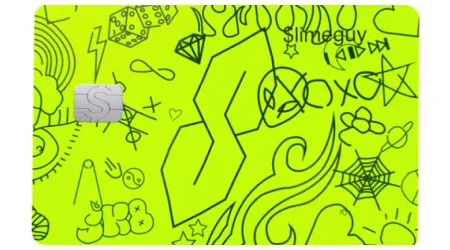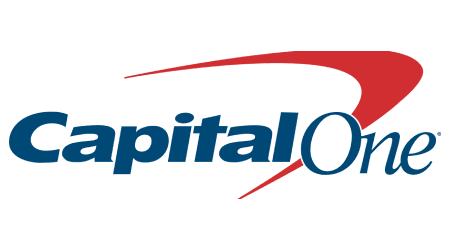
9.4 Excellent
- $0 monthly fee
- Send and request money, deposit cash and access ATMs
- Free saving and investing features
- Set spending controls and investing limits
9.4 Excellent
Teens age 13-17 require approval and sponsorship from parent or guardian to use Cash App. To view the eligibility requirements for sponsoring a teen, please visit the Sponsored Accounts section of the Cash App Terms of Service.
Brokerage services by Cash App Investing LLC (CAI), member FINRA/SIPC, and a subsidiary of Block, Inc. Bitcoin services provided by Block, Inc. and are not licensable activity in all U.S. states and territories. Block, Inc. operates in New York as Block of Delaware and is licensed to engage in virtual currency business activity by the New York State Department of Financial Services. Investing and bitcoin are non-deposit, non-bank products that are not FDIC insured and involve risk, including monetary loss. CAI does not trade bitcoin and Block, Inc. is not a member of FINRA or SIPC. For additional information, see the Bitcoinand Cash App Investing disclosures.
9.2 Excellent
- Starts at $5.99/month after free trial
- Earn up to 6% on savings and 1% cashback
- Optional investing tools
- You and a referred friend can earn $30+
9.2 Excellent
How to choose the best debit card for my kid
Compare the following features when shopping around for a debit card for your child:
- Check the fees. The costs can vary between cards and banks. Most prepaid cards will have either a monthly or yearly fee.
- Spending limits. Look for cards that let you cap daily spending and set limits for ATM withdrawals or at specific stores.
- Shopping online. Consider whether being able to buy online is a benefit or a downside, and opt for a kids’ debit card that can restrict or block online spending if needed.
Common features of a kids’ debit card
There are six common features to consider when looking for a debit card for your kid:
- Chores and allowances. Many debit cards for kids offer a way to track and pay your kids for chores that they complete. You also have the option to pay allowances.
- Like a regular debit card. Your kid can use their prepaid debit card to make purchases online and in person, generally anywhere Mastercard or Visa is accepted.
- Spending controls. Many children’s debit cards come with spending control limits that parents can set within their mobile banking app to restrict how much their child can spend.
- Card lock. Parents can also lock the debit card online or via an app.
- Choose how your child can spend. Parents can choose if the card can be used at ATMS, online or for in-store purchases.
- Spending tracking tools. Many mobile banking apps offer spending tracking tools and features to help your child learn how to manage their money.
How do debit cards for kids work?
Most debit cards for kids are prepaid cards. You can load money onto them from an app using your checking account. Then, your kid can use them to shop online and in-store just as they would a normal debit card. The major difference is that your kid typically can’t overdraft with a prepaid debit card as they could a regular debit card.
A lot of these cards come with extra features, like the ability to see how your child spends their money or pay them for doing chores.
At what age can my child get a debit card?
Prepaid cards are available for kids as young as five. But debit cards linked to traditional checking accounts usually require your child to be at least 13.
You can help your child transition to a prepaid debit card for teens once they turn 13, or you can help them open a checking account for teens if they’ve outgrown the prepaid card.
Are debit cards for kids safe?
Yes, debit cards for kids are generally safe because of two main features. First, they’re FDIC-insured so you’re guaranteed to get your money back if the bank fails. Secondly, most debit cards for kids are COPPA-compliant, meaning they never sell or collect your child’s personal information, including their name, address, Social Security numbers, and even their geolocation and images.
Is my child ready for a debit card for kids?
Your child may be ready for a kids debit card if they often ask to borrow cash or have started earning money on their own — whether through an allowance or a paid job. A debit card like Greenlight can help them master the art of spending, saving and investing wisely.
If your child isn’t ready to handle real money just yet, consider a simulated bank account like Bankaroo. This app use virtual money to help young children learn how to spend and save until they’re ready to upgrade to a real debit card for kids.
How can I get a kids debit card?
You can open most debit cards for kids online. But keep in mind that if you decide to open a kids checking account as opposed to a prepaid card, you’ll need to open it as a joint account between a minor and an adult.
What are the pros and cons of a debit card for kids?
Before you get a debit card for your kid, consider these features and drawbacks:
Pros
- Control. Keep track of your child’s spending online and cap the daily limit as you see fit.
- Security. You can monitor your child’s spending in the mobile banking app to see where they’re going.
- Safety. Because you can quickly and easily lock the debit card if it’s misplaced, debit cards are often safer than carrying cash.
- Good practice. Using a debit card will teach your child how money works digitally.
Cons
- Not a checking account. The majority of debit cards for kids are prepaid cards, and not actual checking accounts.
- Not good for large purchases. Accounts for children generally have much lower debit card spending limits than adult accounts.
- Other fees. They may rack up fees for using out-of-network ATMs or overdrawing their account.
- No interest. These types of accounts usually don’t pay interest.
- Age limits. Each card or bank can set its own age limit.
Bottom line
A prepaid debit card for kids can help your child learn how to manage money responsibly — and let you track their spending so you can see if they’re meeting that goal. But while some prepaid cards let kids save money on them, they’re not a replacement for a savings account.Compare savings accounts for kids and prepaid debit cards to create a banking solution that’s right for your family.
Frequently asked questions?
Ask a question
Read more on Kids Banking
-
Modak vs. Greenlight: Which Kids’ Card Is Worth It?
Modak has no monthly fee, but it’s slim on features. Greenlight starts at $5.99 but is a value for big families.
-
Best Free Kids’ Debit Cards of 2025
Compare the six best kids’ bank accounts that have no monthly fees.
-
Teenage Money Management: 8 Ways to Teach Your Teen
Explore 8 ways to teach your teen healthy financial habits.
-
6 Fun Games That Teach Kids How to Invest
Help your kids learn about the stock market and practice investing before using real money with these fun games.
-
How to Make Money as a Kid
Teach your kids money management with these job ideas, including walking dogs, shovelings snow and teaching sports.
-
BusyKid Visa Prepaid Spend Card Review
BusyKid is one of the best kids’ cards on the market, but you’ll pay $48 per year.
-
7 Best Debit Cards for Kids
Compare the best kids’ debit cards with strong parental controls, minimal fees and fun features.
-
Greenlight Debit Card for Kids Review
See our first-hand review of the Greenlight card to see if the $5.99 monthly fee makes sense for your family.
-
Best Savings Accounts for Kids: Save for the Future and Teach Money Smarts
Compare the best five kids’ savings account options to save for their future.
-
Credit Cards for Teens: What to Know
Compare top credit cards for teens and how they work when you’re a minor.


